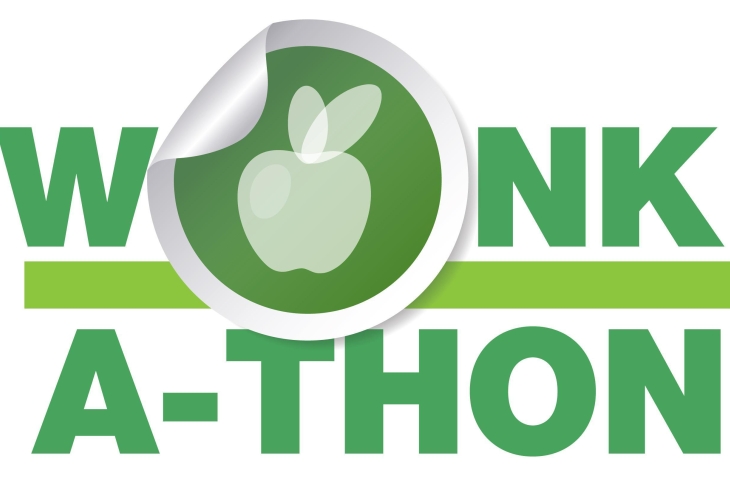Editor's note: This post is a submission to Fordham's 2018 Wonkathon. We asked assorted education policy experts whether our graduation requirements need to change, in light of diploma scandals in D.C., Maryland, and elsewhere. Other entries can be found here.
More than a century ago, the Carnegie Foundation for the Advancement of Teaching established the “Carnegie Unit,” a way to quantify and standardize the high school (and postsecondary) experience. At a time when so few school-aged children were graduating from high school, and when the meaning of graduation varied from school to school and state to state, some metric needed to be put in place to give the high school diploma meaning.
Such a system served a great purpose for the decades and decades that followed. Putting a time-based measure on a high school diploma made sense then: A third of students could drop out of high school and still keep a job, another third would move to career or military directly upon high school graduation, and only the final third pursued postsecondary education. But times have changed. Even the Carnegie Foundation itself acknowledged that “measuring student learning by ‘seat time’ in this new educational era most certainly seems obsolete.”
Yet we keep this obsolescence largely in place when it comes to K–12 education. In those states that have looked to experiment in competency-based education, like New Hampshire, we still expect new modes of high school education to be framed largely around century-old thinking regarding classes, courses, and grading periods. At the same time, we can see school districts that have reduced the high school diploma into nothing more than a glorified certificate of attendance, leaving necessary instruction to employers, community colleges, and others who will be responsible for the learner long after those high school glory days are completed.
More than a decade ago, I led a series of focus groups for the National Governors Association and other organizations on how to make the high school experience more meaningful and impactful. When students were asked about dropping out, they said it wasn’t because the content was too hard or the work too overwhelming. Urban, rural, and suburban students all said they dropped out because high school was boring and the experience was completely detached from their aspirations, interests, or learning styles. For many dropouts, the process of high school was irrelevant. It didn’t connect personally and directly with the learner.
If we are serious about changing our graduation requirements, let’s honor the request of the creators of the Carnegie Unit and do away with a “time served” model of high school in which success is measured largely by how many days a student has been in class and how many hours he or she has been in a seat. If we are serious about making high school and diplomas meaningful, let’s transform the experience so that students only graduate after demonstrating mastery on the key concepts we expect every eighteen-year-old entering college or career to have.
Today, we remain caught up on what is taught and how it is taught, not necessarily what is learned and how it is put to use. The student population today is nowhere close to being as homogenous as it was when the Carnegie Unit was adopted. In any given classroom, we have students of different backgrounds, different language abilities, different learning challenges, different preferred learning styles—different everything. A student adept at Algebra II shouldn’t need to sit through the class for 180 days because others don’t grasp the concepts. A student with a deep understanding of American history shouldn’t be asked to sit through the basics yet again because it is expected in ninth grade. Once a learner is able to demonstrate a mastery of the content and is able to apply that content in an appropriate manner, he or she should be able to move on to the next content area. Mastery-based high school allows us to prioritize the LEARNER in a way most high schools today simply do not.
Yes, there are many people who will be quick to criticize, seeing competency-based education as a fad or an effort to hand education over to our new computer overlords. But they’re mistaken.
Strong mastery-based education comprises both learning and applying what is learned. It isn’t checklist education. It is about students demonstrating an understanding of key concepts and being able to apply those competencies in a number of ways and formats. It gets us away from dreaded paths on which educators teach to the test and students memorize facts, and instead directs us to a place wherein we focus both on what is taught AND what is learned.
Strong mastery-based education is strong differentiated instruction. It is prioritizing the student and recognizing the strengths and weaknesses each child brings to the learning process. If done correctly, it can open up new content areas and new learning pathways that were previously unavailable to a student.
Strong mastery-based education is about empowering teachers, giving them not only the OK to tailor instruction to meet the needs of the learner, but urging them to reject the “check-the-box” education and instead ensure their students are thinkers, not memorizers.
And strong mastery-based education can allow our secondary schools to meaningfully turn away from the era of the high-stakes test, and replace it with multiple measures that determine what each and every student has learned and how they’ve been taught to use it. This could include portfolios of learner-created work that is focused on how they’ve applied their acquired knowledge in real-life situations, which could be supplemented with formative assessments and videos wherein students explain their grasp of the content.
Despite what we may want to believe, there is nothing magical about sitting in a high school for seven or eight hours a day, for 180 days a year, for four years. Nothing about such a time metric ensures that a student is ready for postsecondary education (as our rising college remediation rates make clear); that a learner has the skills and knowledge to perform in the workplace; or that one has completed high school in a truly meaningful way.
The Carnegie Unit worked when we were focused on making secondary school education compulsory. It worked as our colleges and universities were trying to best determine who was ready for the rigors of a college education as we looked to open the doors of postsecondary education to all. The time has come to declare the Carnegie Unit–mission accomplished and move on from it.
Yes, it is a major challenge to ask the education community to determine what an individual should know and be able to do in all subject areas if he or she is to earn a high school diploma. We’ve seen how successful the implementation of Common Core State Standards has been. But this is a challenge worth undertaking. And it may be the only way we can ensure that all learners are prepared for what the future may hold.
If we want a generation of thinkers—one of learners who can apply what they know to solve the greatest challenges that may be before them—we can no longer make high school about punching the clock. The time has come to transform public secondary education to a mastery-based model.

